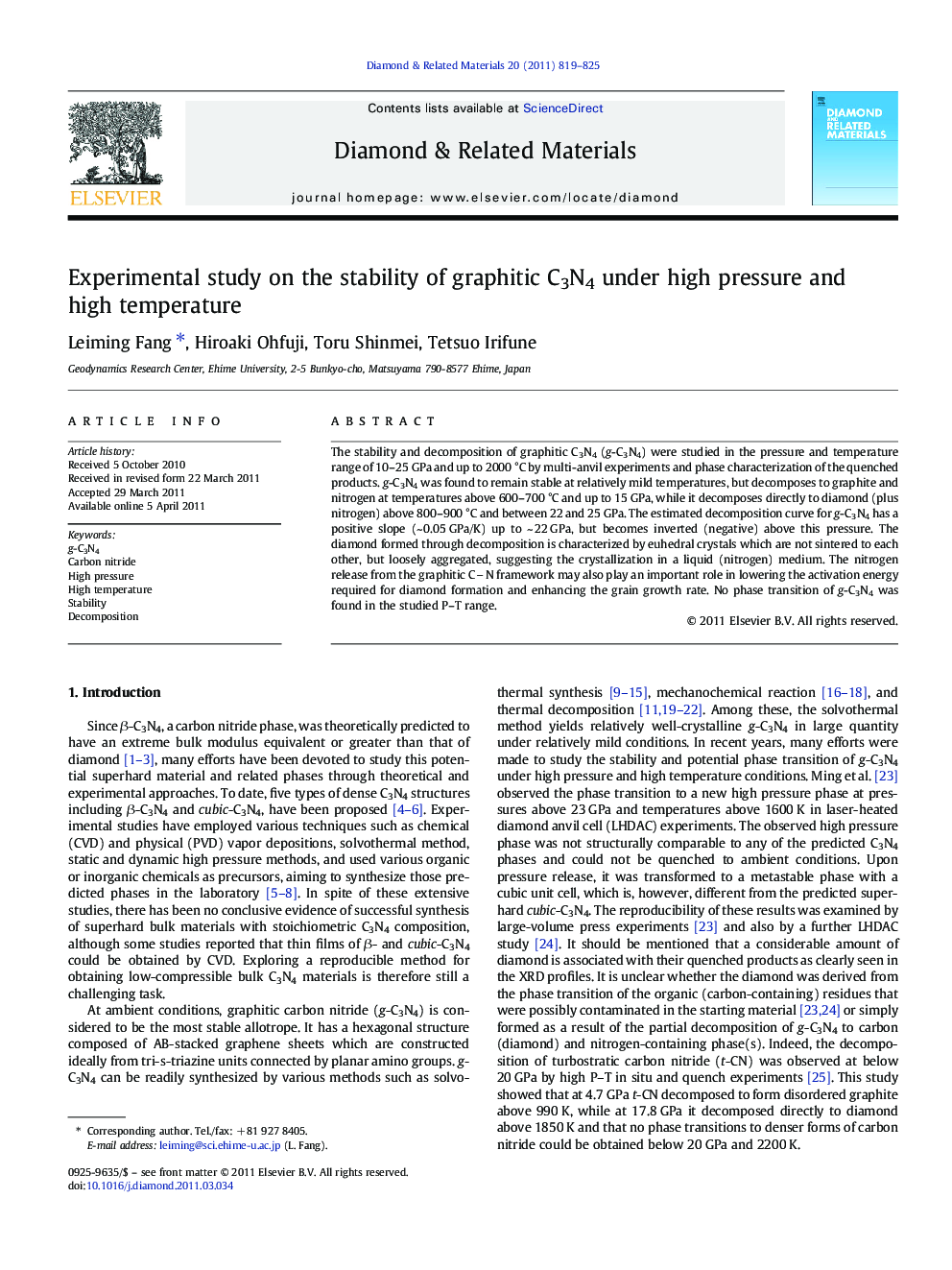| Article ID | Journal | Published Year | Pages | File Type |
|---|---|---|---|---|
| 701948 | Diamond and Related Materials | 2011 | 7 Pages |
The stability and decomposition of graphitic C3N4 (g-C3N4) were studied in the pressure and temperature range of 10–25 GPa and up to 2000 °C by multi-anvil experiments and phase characterization of the quenched products. g-C3N4 was found to remain stable at relatively mild temperatures, but decomposes to graphite and nitrogen at temperatures above 600–700 °C and up to 15 GPa, while it decomposes directly to diamond (plus nitrogen) above 800–900 °C and between 22 and 25 GPa. The estimated decomposition curve for g-C3N4 has a positive slope (~ 0.05 GPa/K) up to ~ 22 GPa, but becomes inverted (negative) above this pressure. The diamond formed through decomposition is characterized by euhedral crystals which are not sintered to each other, but loosely aggregated, suggesting the crystallization in a liquid (nitrogen) medium. The nitrogen release from the graphitic CN framework may also play an important role in lowering the activation energy required for diamond formation and enhancing the grain growth rate. No phase transition of g-C3N4 was found in the studied P–T range.
Graphical abstractThe stability of g-C3N4 under HTHP conditions was studied up to 25 GPa and 2000 °C based on multi-anvil quench experiments. The results demonstrate that g-C3N4 remains stable at relatively mild temperatures, but decomposes to C and N upon heating above 600 and 900 °C, respectively, at 10 and 25 GPa.Figure optionsDownload full-size imageDownload as PowerPoint slideResearch highlights► g-C3N4 remains stable at relatively mild temperatures (< 600 °C) at pressures up to 25 GPa. ► g-C3N4 decomposes to graphite or diamond and liquid nitrogen depending on the P–T conditions. ► No phase transition of g-C3N4 was observed at P–T conditions up to 25 GPa and 2000 °C.
